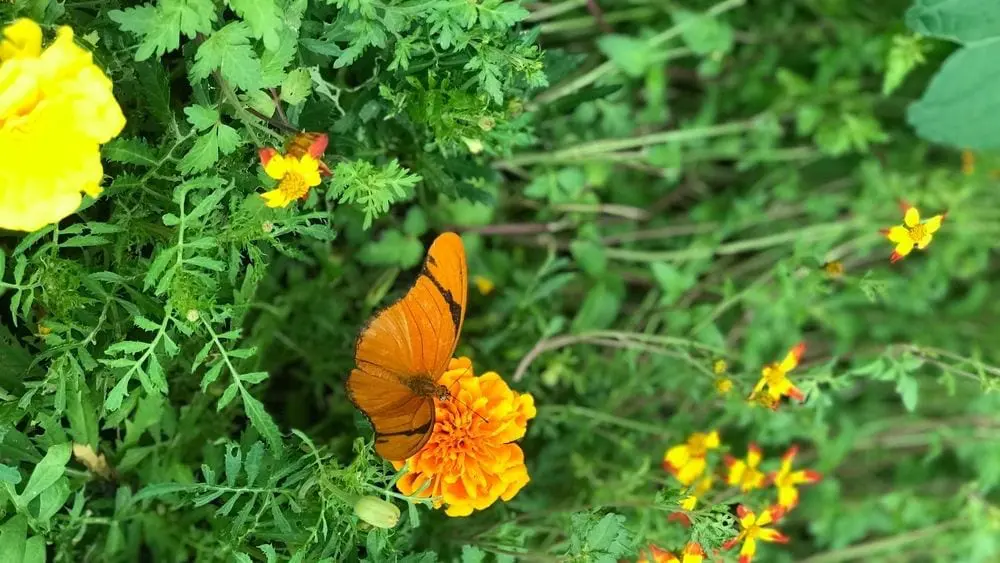
Many of us choose to downsize as we get older. Who needs all those extra rooms and the task of cleaning them? And that half-acre property that was the envy of your neighbors is now a big hassle and expense. Who needs the trouble?
A smaller home with a small backyard is just the ticket — allowing you to keep your green thumb busy and still comfortably entertain friends and family. A small backyard will also result in lower utility and water bills and fewer landscaping needs. If you have had a large yard for a long time, you will be amazed by the savings!
Decreasing the size of your yard doesn’t mean you have to skimp on quality and class. You can turn your small backyard into a beautiful, cozy, intimate space for you and your family and friends to enjoy.
Keep it Simple
When dealing with a small space, less is more. The beauty of the space and the plants you choose will really shine through if you don’t crowd the space with a lot of furniture or large plants or trees.
Another way to keep it simple is by choosing plants that are native to your region. They will thrive with less effort and less water.
Extend Your Home
Stylist Emily Henderson says you can mix and match all kinds of design styles — indoors and out — without it looking like a jumbled mess. The way to do it is with a consistent color palette. “This is the number one problem I see — not telling a cohesive color story through furniture and accessories,” Henderson states. “Choose a few colors that you’ve always loved, add some neutrals, throw in some accent colors, and then shop and style only within those colors.”
You can easily use your small backyard to extend your indoor living space by using a cohesive color scheme that flows through your home and out into the garden. This creates a sense of calm, balance and unity that will positively affect your well-being. Visitors will appreciate the warm, welcoming feeling that a cohesive color scheme provides.
Not sure how to do that? We recommend trying the Coolors online tool for generating color schemes.
Attract Butterflies
Jane Hurwitz, the author of Butterfly Gardening, explains that butterfly gardening “is a gardening method that allows the interplay between the natural world and human-made habitats to expand in ways that allow wildlife to flourish. Learning the interconnections between plants and butterflies is fascinating and works as a catalyst to deepen our connection to our natural surroundings.”
When choosing what to plant in your small backyard, consider using at least part of the space as a butterfly garden. Not only are butterflies important pollinators that contribute to the health of our ecosystem, they are also beautiful and lovely to see fluttering around a yard. Young and old delight equally in butterflies.
The best way to attract butterflies is to plant flora native to your region. The National Wildlife Federation has an online native plant finder to help you find the best plants in your area to attract butterflies.
Edible Landscaping
Some gardens, even small ones, can serve double duty by being pleasing to both the eye and your taste buds. Many edible plants are easy to grow and don’t necessarily need to be separated from the rest of your garden in raised beds, so they blend right in with your ornamental landscape.
Rosalind Creasy, an expert on edible landscaping who has been writing on the topic for decades, calls herbs “edibles with training wheels” because they’re the easiest to grow. The thing about edible plants is that they’re never wasted. “They all serve a purpose, whether it’s sharing with your neighbors, adding to your compost, or providing for the local food bank — all of which nurture our communities,” she explains. Even people who don’t get to spend time in your garden can benefit from it.
The USDA maintains a plant hardiness zone map, where can help you determine which plants are most likely to thrive based on where you live.
Moon Garden
A moon garden might sound like something out of Tolkien’s The Hobbit, but it’s actually something you can do in your own small backyard! The idea behind a moon garden is that there are lots of plants that open up or glow in the moonlight, so why not include some in your garden that you can enjoy after the sun goes down?
Four kinds of plants can be included in a moon garden: plants with white or silver flowers, plants with bright or reflective foliage, night bloomers and plants with fragrant blooms. Because moon gardens are intended for your enjoyment, be sure to include comfortable seating.
No matter how you decide to use your small backyard, it can be a source of life and enjoyment for you, for butterflies and other insects and for your community. Why not live large with a small backyard? You may find that you enjoy it more than that half acre!

Sarah Kinbar is a writer and editor with a passion for design and images. She was the editor of Garden Design magazine, curating coverage of residential gardens around the globe. As the editor of American Photo, Kinbar worked with photographers of every genre to create a magazine that told the story of the photographer’s journey.
She has been writing about architecture, landscape design and new-home construction for NewHomeSource since 2012. During that time, she founded Kinship Design Marketing, a boutique agency that provides content for website redesigns, blogs, inbound marketing campaigns and eNewsletters.
 How to Maintain Your New Home
How to Maintain Your New Home